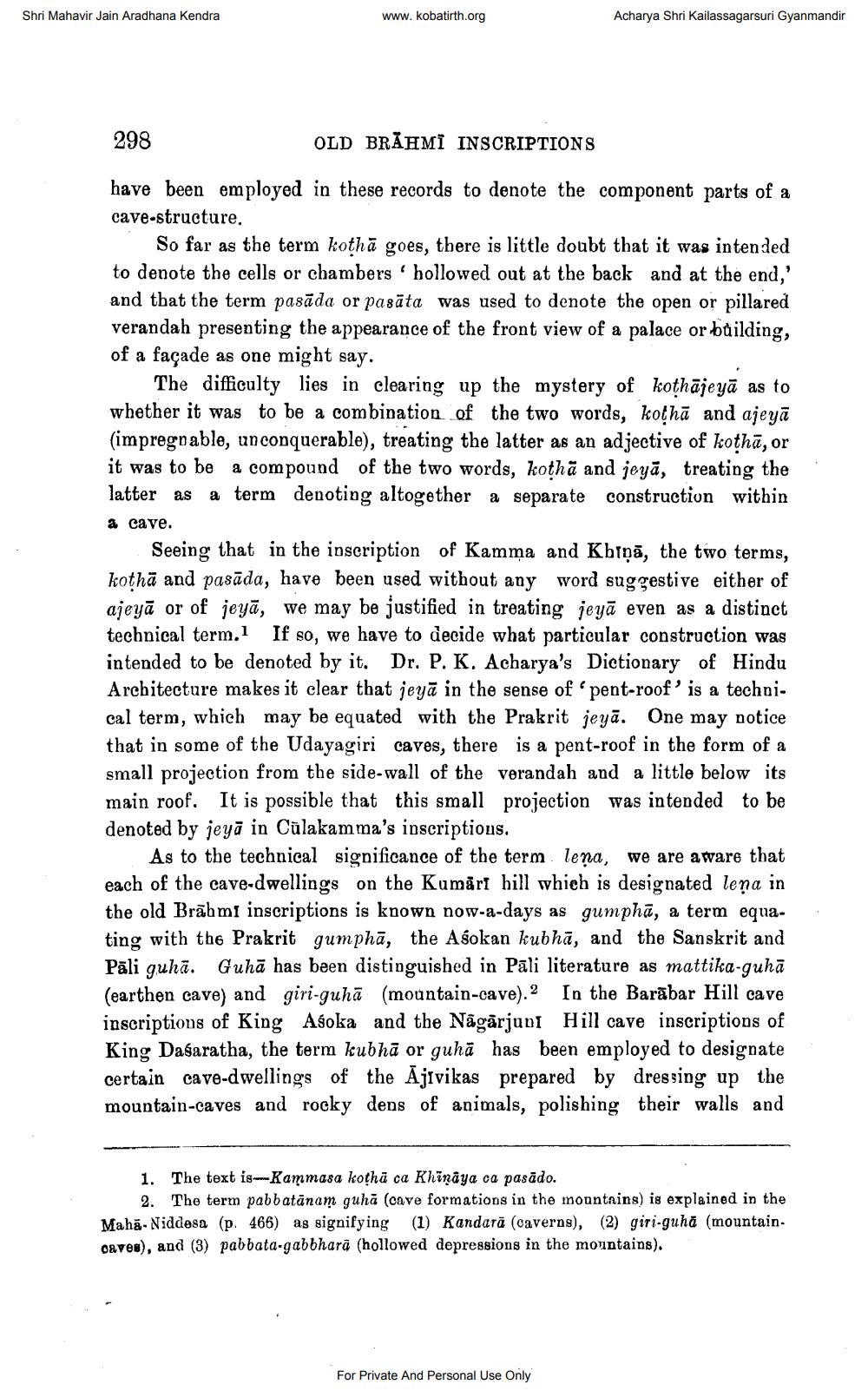________________
Shri Mahavir Jain Aradhana Kendra
www.kobatirth.org
a cave.
298
OLD BRAHMI INSCRIPTIONS
have been employed in these records to denote the component parts of a cave-structure.
So far as the term kotha goes, there is little doubt that it was intended to denote the cells or chambers' hollowed out at the back and at the end,' and that the term pasada or pasata was used to denote the open or pillared verandah presenting the appearance of the front view of a palace or building, of a façade as one might say.
The difficulty lies in clearing up the mystery of kothajeya as to whether it was to be a combination of the two words, kotha and ajeya (impregnable, unconquerable), treating the latter as an adjective of kotha, or it was to be a compound of the two words, kotha and jeya, treating the latter as a term denoting altogether a separate construction within
Acharya Shri Kailassagarsuri Gyanmandir
Seeing that in the inscription of Kamma and Khina, the two terms, koṭhā and pasāda, have been used without any word suggestive either of ajeyā or of jeyā, we may be justified in treating jeya even as a distinct technical term.1 If so, we have to decide what particular construction was intended to be denoted by it. Dr. P. K. Acharya's Dictionary of Hindu Architecture makes it clear that jeya in the sense of 'pent-roof' is a technical term, which may be equated with the Prakrit jeya. One may notice that in some of the Udayagiri caves, there is a pent-roof in the form of a small projection from the side-wall of the verandah and a little below its main roof. It is possible that this small projection was intended to be denoted by jeya in Culakamma's inscriptions.
As to the technical significance of the term lena, we are aware that each of the cave-dwellings on the Kumari hill which is designated lena in the old Brahmi inscriptions is known now-a-days as gumpha, a term equating with the Prakrit gumpha, the Asokan kubha, and the Sanskrit and Pāli guha. Guha has been distinguished in Pali literature as mattika-guhā (earthen cave) and giri-guha (mountain-cave). In the Barabar Hill cave inscriptions of King Asoka and the Nagarjun Hill cave inscriptions of King Dasaratha, the term kubha or guha has been employed to designate certain cave-dwellings of the Ajivikas prepared by dressing up the mountain-caves and rocky dens of animals, polishing their walls and
1. The text is-Kammasa kotha ca Khinaya ca pasado.
2. The term pabbatānam guha (cave formations in the mountains) is explained in the Maha-Niddesa (p. 466) as signifying (1) Kandară (caverns), (2) giri-guha (mountaincaves), and (3) pabbata-gabbhara (hollowed depressions in the mountains).
For Private And Personal Use Only




